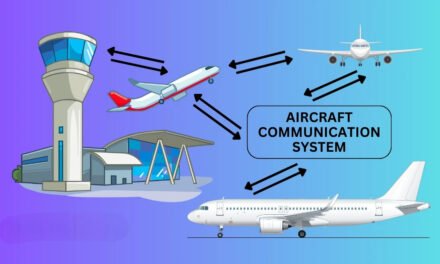The Aerospace and Defense (A&D) sector faces growing environmental and sustainability concerns due to its significant contributions to greenhouse gas emissions, resource consumption, and waste generation. As the industry evolves, addressing these challenges has become a critical priority for stakeholders, including manufacturers, airlines, governments, and consumers. Here’s an overview of the key concerns and the efforts being made to mitigate them:
Key Environmental and Sustainability Concerns
1. Greenhouse Gas (GHG) Emissions
- Commercial Aviation:
- Responsible for approximately 2-3% of global CO₂ emissions.
- Jet fuel combustion produces carbon dioxide (CO₂), nitrogen oxides (NOₓ), and water vapor, contributing to global warming and the formation of contrails.
- Military Operations:
- High fuel consumption by military aircraft, ships, and vehicles leads to significant emissions.
- Space Launches:
- Rocket launches release CO₂, black carbon, and other pollutants into the upper atmosphere, impacting climate and ozone layers.
2. Resource Consumption
- Raw Materials:
- Extensive use of non-renewable resources like aluminum, titanium, and rare earth metals.
- Mining and processing of these materials contribute to environmental degradation.
- Energy Use:
- High energy consumption in manufacturing and operational processes, often reliant on fossil fuels.
3. Noise Pollution
- Aircraft Noise:
- Aircraft operations, especially during takeoff and landing, generate noise pollution, affecting communities near airports.
- Military Testing:
- Testing of military systems, such as supersonic jets and weapons, contributes to noise pollution in affected areas.
4. Waste Generation
- Manufacturing Waste:
- Production processes generate significant amounts of scrap materials and hazardous waste.
- End-of-Life Aircraft and Equipment:
- Retired aircraft, satellites, and military equipment pose disposal challenges due to their complex materials and hazardous components.
- Space Debris:
- Defunct satellites and rocket stages contribute to the growing problem of orbital debris, threatening active satellites and space missions.
5. Water and Soil Pollution
- Chemical Use:
- Use of hazardous chemicals in manufacturing and maintenance, such as degreasers, coatings, and solvents, can contaminate water and soil.
- Fuel Spills:
- Accidental fuel spills during operations and maintenance can lead to environmental damage.
Sustainability Initiatives in the A&D Sector
1. Sustainable Aviation Fuels (SAFs)
- Overview:
- SAFs are produced from renewable resources like algae, waste oils, and agricultural residues, offering up to 80% lower lifecycle emissions compared to conventional jet fuel.
- Adoption:
- Airlines and manufacturers are increasingly investing in SAF infrastructure and partnerships to scale production and usage.
- Challenges:
- High costs and limited availability remain significant barriers to widespread adoption.
2. Energy Efficiency
- Aircraft Design:
- Development of lightweight materials, advanced aerodynamics, and more efficient engines to reduce fuel consumption.
- Examples: Boeing 787 Dreamliner, Airbus A350, and Pratt & Whitney GTF engines.
- Operational Improvements:
- Optimized flight routes, reduced idling times, and advanced air traffic management systems to minimize fuel burn.
3. Electrification and Alternative Propulsion
- Electric Aircraft:
- Focus on developing battery-powered and hybrid-electric propulsion systems for regional and short-haul flights.
- Hydrogen-Powered Aircraft:
- Research into using hydrogen as a zero-emission fuel source for aviation.
- Challenges:
- Limited energy density of current batteries and infrastructure requirements for hydrogen storage and distribution.
4. Circular Economy Practices
- Recycling and Reuse:
- Recycling materials from retired aircraft and components to reduce waste.
- Example: Airbus’s PAMELA (Process for Advanced Management of End-of-Life Aircraft) program.
- Additive Manufacturing (3D Printing):
- Reduces waste by using only the required amount of material during production.
5. Noise Reduction Technologies
- Quieter Engines:
- Advances in engine design to reduce noise during aircraft operations.
- Flight Path Optimization:
- Routes designed to minimize noise impact on residential areas.
6. Sustainable Space Practices
- Space Debris Mitigation:
- Efforts to develop technologies for debris removal and improve the sustainability of space operations.
- Example: ESA’s ClearSpace-1 mission to remove orbital debris.
- Reusable Rockets:
- Innovations like SpaceX’s Falcon 9 and Starship reduce waste by enabling rocket reuse.
7. Renewable Energy in Manufacturing
- Green Factories:
- Aerospace manufacturers are transitioning to renewable energy sources like solar and wind to power their facilities.
- Energy-Efficient Processes:
- Adoption of energy-saving technologies in production and assembly lines.
8. Environmental Compliance and Reporting
- Regulations:
- Governments and international bodies (e.g., ICAO, EU) impose stricter environmental regulations on emissions and noise.
- Carbon Offsetting:
- Airlines and operators participate in carbon offset programs like ICAO’s CORSIA to neutralize emissions.
Challenges in Achieving Sustainability
- High Costs:
- Green technologies, SAFs, and advanced materials are often costlier than traditional alternatives.
- Technical Barriers:
- Limitations in battery capacity, hydrogen storage, and SAF production scale hinder rapid adoption.
- Regulatory Uncertainty:
- Inconsistent policies across regions create challenges for global compliance and coordination.
- Market Demand:
- Pressure to balance sustainability goals with operational costs and customer demand for affordable travel.
Future Outlook
- The A&D sector is steadily moving toward greater sustainability through innovation and regulatory frameworks.
- Collaboration between governments, manufacturers, and stakeholders is crucial for achieving ambitious environmental targets like net-zero emissions by 2050.
- Continuous investment in R&D for sustainable fuels, alternative propulsion systems, and green manufacturing will drive the sector toward a more sustainable future.
Conclusion
Environmental and sustainability concerns in the A&D sector are substantial but not insurmountable. Through a combination of innovative technologies, strategic collaborations, and regulatory support, the industry is making strides toward reducing its environmental impact while maintaining operational and economic viability.
Hashtags
#SustainableAerospace #GreenAerospace #SustainableDefense #EcoFriendlyAviation #EnvironmentalImpact #SustainabilityInDefense #AerospaceSustainability #NetZeroAerospace #CarbonNeutralFlight #ZeroEmissionsAviation #DecarbonizingAviation #ClimateActionAerospace #SustainableAviationFuels #SAFInnovation #GreenTechnology #SustainabilityAwareness













